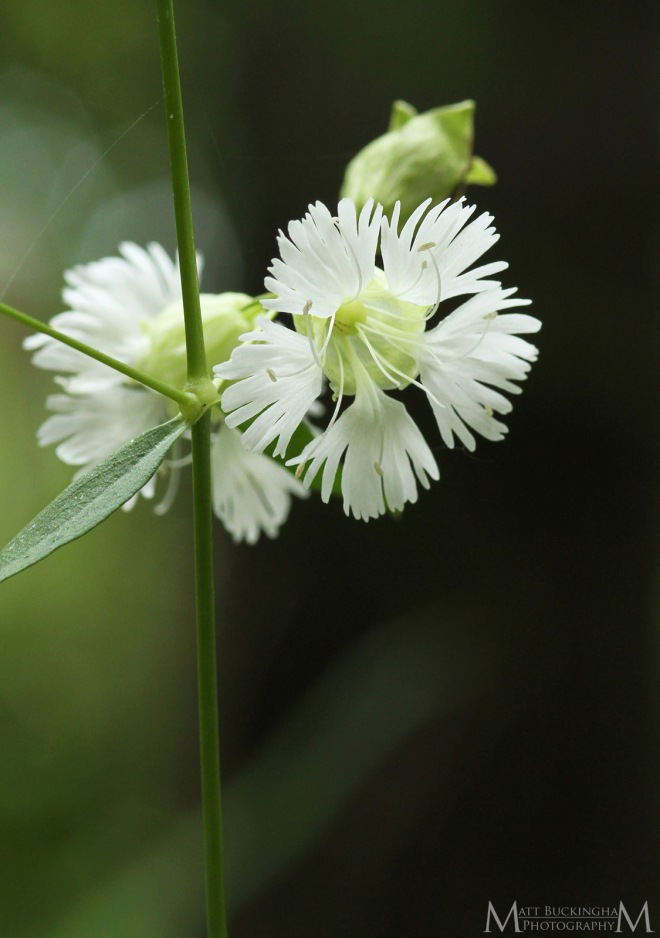Target Species: Starry Campion (Silene stellata)

Starry Campion
Sometimes good things happen when you least expect it. Such was the case when I checked the Starry Campion (Silene stellata) off my 2017 biodiversity list. The botanist for the National Forests and Grasslands in Texas informed me of a new population of the Crested Coralroot (Hexalectris spicata) in Houston County. While I had photographed this orchid before, it is so spectacular that I could’t resist checking out this newly discovered population. I received a vague set of directions to the site, but thought that I had it figured out, so I set out to find it.
It turns out that I had gone to the wrong spot. I arrived to where I thought the orchids would be and found nothing. What I did find, however was what I believe is the first vouchered population of Silene stellata in Houston County. I was not expecting to see it here, and a subsequent search of published range maps and herbaria did not turn up any records for Houston County, so I believe this is the first.

Starry Campion
Starry Campion occurs in scattered populations throughout most of the eastern United States. It prefers rich mesic to dry-mesic slopes, where it typically grows in the shade of hardwoods. In Texas it tends to prefer calcareous sites. It is primarily pollinated by moths, and it’s large, fluffy-looking blooms open in the evening and remain open throughout the night. They begin to close the following morning. I found several plants scattered about the lower reaches of a rich mesic slope.

Starry Campion
It was hard to be disappointed about not finding the coralroots when the “wrong” path led me to one of my target species – one that I have never seen in bloom. However, after some clarification on the directions I was able to make it to the Crested Coralroots after all. These are, in my opinion, one of the most striking orchids in the country. They occur in scattered populations in wooded areas throughout much of Texas. It seems that a rich, undisturbed layer of leaf-litter is a prerequisite. They are mycoheterotrophic, obtaining nutrients and energy from fungus living within the soil. I spent the evening photographing them, and left feeling content in having found both the expected and unexpected.

Crested Coralroots

Crested Coralroot

Crested Coralroots. Though they are brightly colored when views up close, they can be very difficult to spot from a distance.
